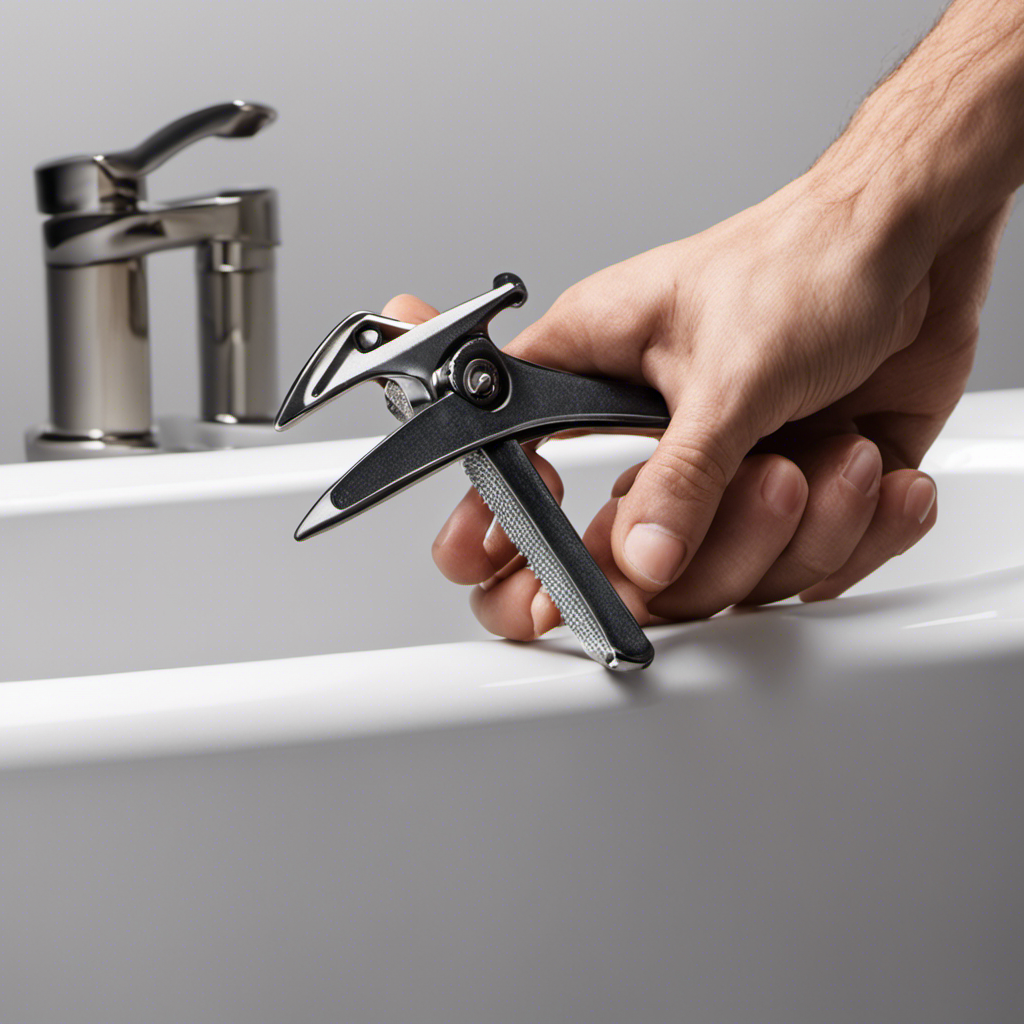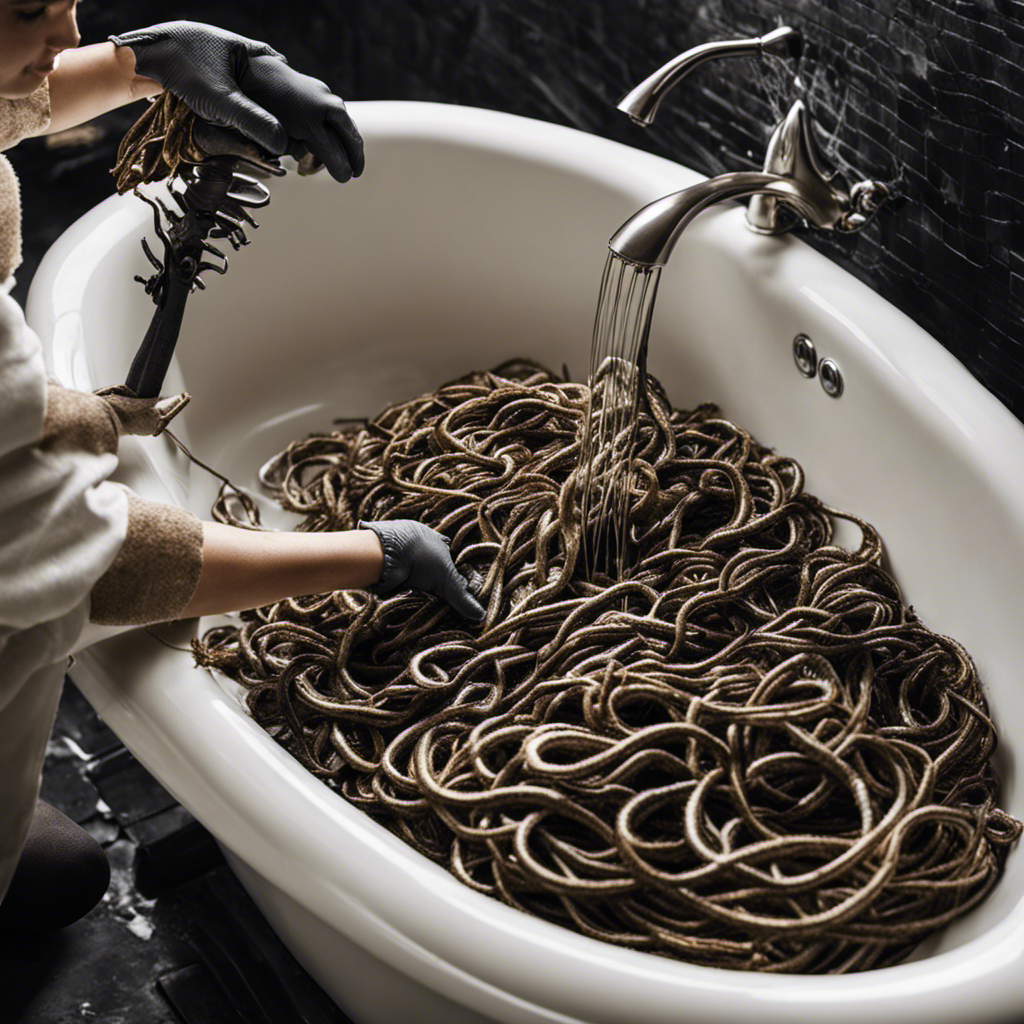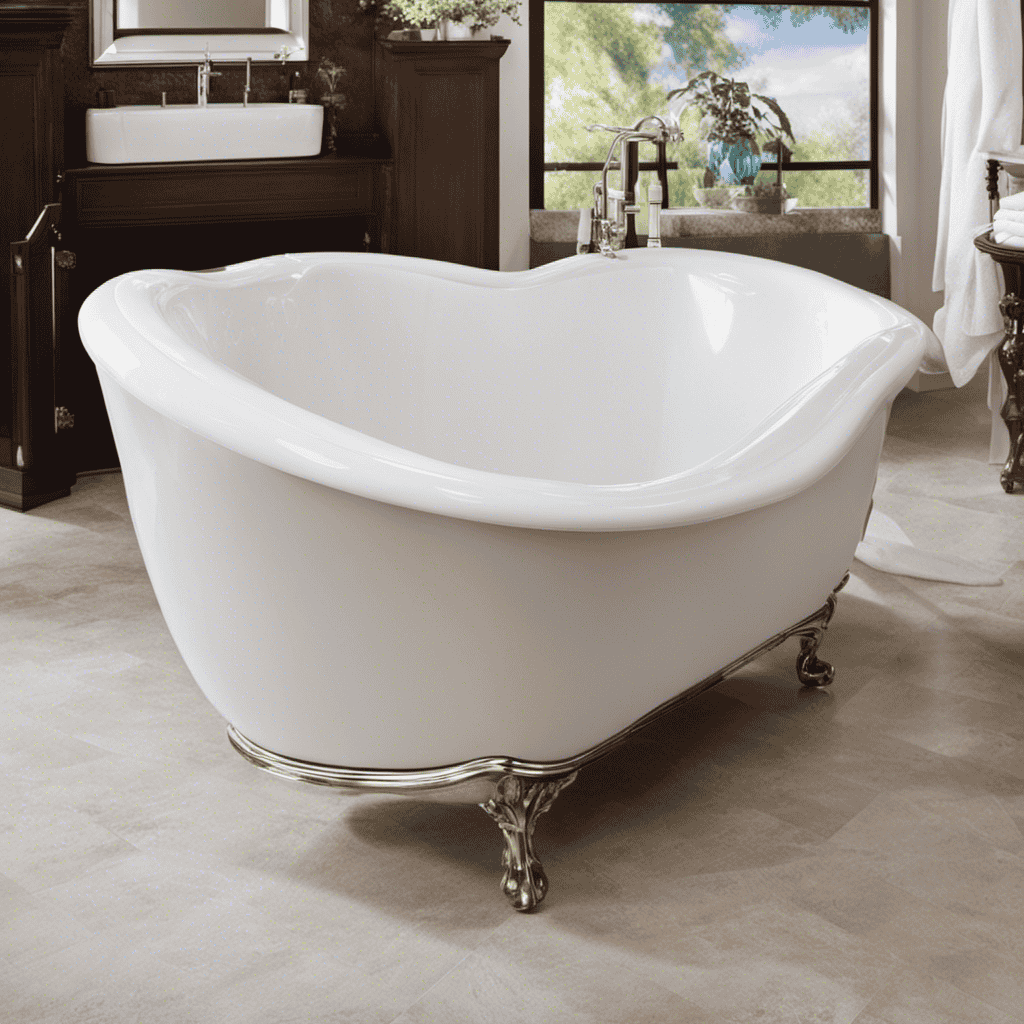I know what you might be thinking – why does the foam underneath your bathtub even matter? Well, let me tell you, it’s more important than you might realize.
The right kind of foam can provide insulation, prevent leaks, and even reduce noise. But with so many options out there, how do you know which foam is the right one?
That’s exactly what we’ll be exploring in this article. From the different types of foam materials to the factors you should consider, we’ll guide you through everything you need to know about choosing and installing foam for your bathtub.
Key Takeaways
- Foam materials such as polyurethane and polystyrene are commonly used for insulating bathtubs.
- Foam insulation creates a barrier to prevent heat loss and reduces condensation, mold, and mildew growth.
- Proper installation of foam under the bathtub is crucial for optimal heat retention and insulation effectiveness.
- Regular maintenance and replacement of foam are necessary to ensure long-lasting insulation and energy efficiency.
The Importance of Foam Underneath Your Bathtub
The foam underneath your bathtub is crucial for providing insulation and preventing damage. Bathtub foam insulation offers several benefits that make it an essential component of your bathroom.
First and foremost, it helps to keep your bathwater warm for longer periods, ensuring a more enjoyable bathing experience. Additionally, the foam acts as a barrier, reducing heat loss and saving energy in the process. Without proper insulation, you may experience higher energy bills due to the constant need to heat up your bathwater.
Moreover, the foam also serves as a cushioning material, preventing any potential damage to the bathtub’s structure caused by excessive weight or impact. Neglecting to use foam under your bathtub can result in increased energy consumption, discomfort during baths, and potential structural issues.
Now, let’s explore the different types of foam materials suitable for bathtub insulation.
Types of Foam Materials Suitable for Bathtub Insulation
You can use various materials to insulate your bathtub, such as foam types like polyurethane or polystyrene. Foam insulation is widely used in home renovation projects due to its excellent insulating properties and ease of installation. When it comes to insulating your bathtub, foam can provide several benefits.
Foam creates a barrier that prevents heat loss, keeping your bathwater warm for longer periods. It helps to reduce condensation, preventing mold and mildew growth. Foam acts as a sound barrier, reducing noise from water splashing or running through the pipes. Foam insulation improves the overall energy efficiency of your bathroom, reducing your heating costs.
Foam insulation is not only suitable for bathtubs but also finds applications in various other household areas. Now, let’s explore the factors to consider when choosing foam for your bathtub insulation.
Factors to Consider When Choosing Foam for Your Bathtub
Consider the type of insulation you want for your bathtub. Different foams have varying levels of heat retention and insulation capabilities. When choosing foam for your bathtub insulation, it’s important to consider the benefits of using foam insulation in other areas of the home.
Foam insulation provides excellent thermal insulation, reducing heat loss and saving energy costs. It also helps to minimize noise transmission, creating a quieter and more comfortable living space. However, there are common mistakes to avoid when choosing foam for bathtub insulation.
One common mistake is using the wrong type of foam that is not suitable for wet environments. This can lead to mold and mildew growth. Another mistake is not properly installing the foam, resulting in gaps and reduced insulation effectiveness.
By considering these factors and avoiding common mistakes, you can ensure that your bathtub insulation provides optimal heat retention and insulation capabilities.
Now let’s move on to how to install foam underneath your bathtub.
How to Install Foam Underneath Your Bathtub
To properly install foam underneath your bathtub, it’s important to follow these steps:
-
Measure and cut the foam: Start by measuring the dimensions of your bathtub and cutting the foam accordingly. This will ensure a precise fit and maximum insulation.
-
Clean the area: Before placing the foam, make sure to clean the area underneath the bathtub thoroughly. Remove any dirt, debris, or old insulation to create a clean surface for the foam.
-
Apply adhesive: Apply a high-quality adhesive to the bottom of the bathtub and press the foam firmly against it. This will create a strong bond and prevent any movement or shifting.
-
Seal the edges: To enhance the insulation and prevent any moisture or air leakage, seal the edges of the foam using a waterproof sealant. This will ensure a tight and secure installation.
Installing foam underneath your bathtub offers several benefits, including improved insulation, reduced noise transmission, and increased energy efficiency. By following these bathtub foam installation tips, you can enjoy a comfortable and well-insulated bathing experience.
Tips for Maintaining and Replacing Foam Underneath Your Bathtub
If you want to maintain the foam underneath your bathtub, it’s essential to regularly inspect it for any signs of damage or wear. Bathtub insulation plays a crucial role in keeping the water warm and preventing heat loss. Over time, the foam may deteriorate or get damaged, compromising its effectiveness. When this happens, foam replacement becomes necessary to ensure optimal insulation.
Here are some tips for maintaining and replacing the foam underneath your bathtub:
-
Inspect the foam regularly: Check for any cracks, tears, or compression in the foam.
-
Clean the foam: Remove any dirt or debris that may have accumulated on the foam surface.
-
Replace damaged foam: If you notice significant damage or wear, it’s time to replace the foam.
Conclusion
In conclusion, the foam underneath your bathtub plays a vital role in ensuring a comfortable and insulated bathing experience.
With various types of foam materials available, it’s important to consider factors such as durability, insulation properties, and resistance to moisture.
Installing foam underneath your bathtub is a straightforward process that can greatly enhance your bathing pleasure.
Remember to regularly maintain and replace the foam to ensure its effectiveness.
So, let the foam be the steady rhythm that keeps your bathtub experience flowing smoothly.










